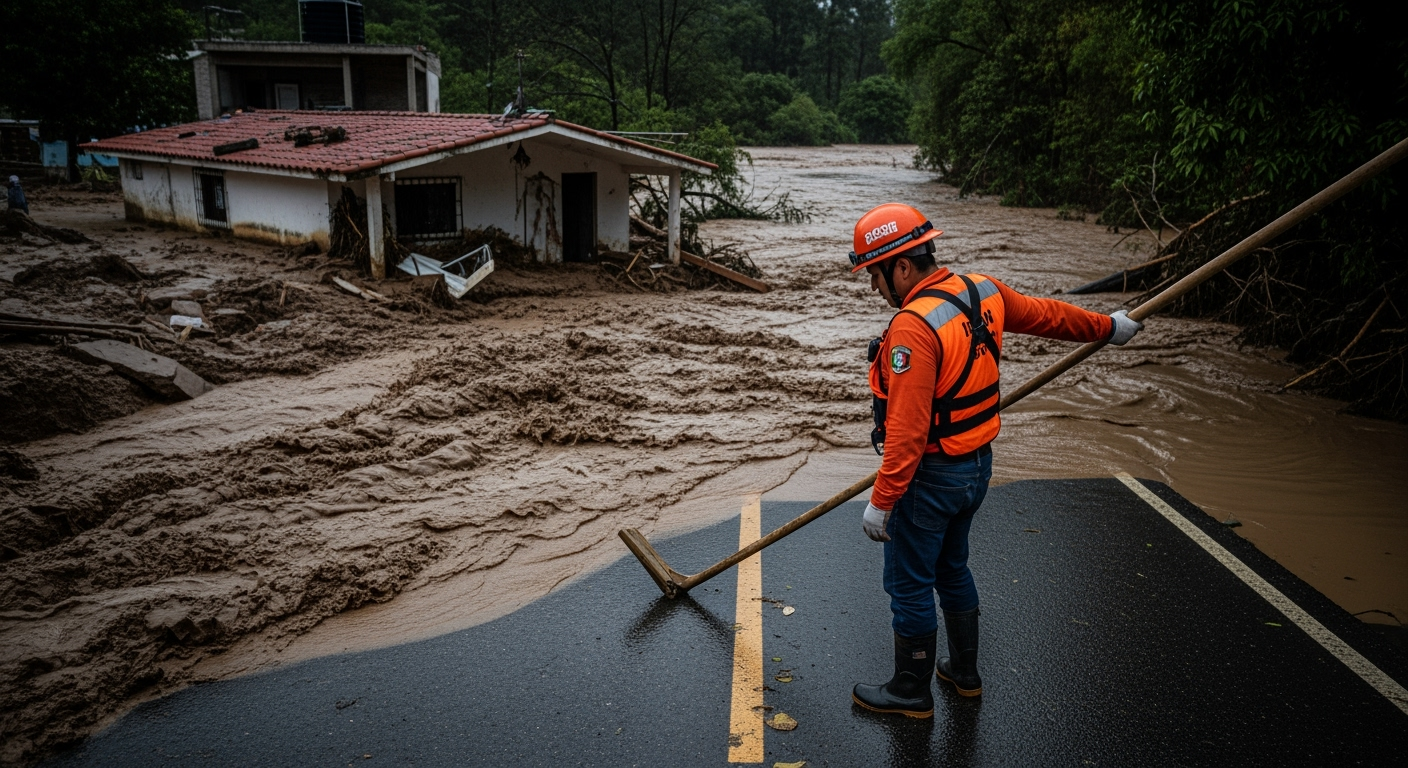Related Articles

Escalating Trade War: China Slams US for 'Double Standards' Amid New Tariffs

Diane Keaton, Oscar-Winning Star and Unforgettable Icon, Dies at 79





MEXICO CITY – Torrential rainfall, exacerbated by tropical weather systems, has unleashed devastating floods and landslides across central and southeastern Mexico this week, claiming the lives of at least 37 people and causing widespread destruction. As rescue efforts intensify, authorities are grappling with an overwhelming crisis that has impacted 31 of the nation's 32 states, leaving thousands displaced and vital infrastructure in ruins.
The relentless downpours have triggered a cascade of natural disasters, with rivers bursting their banks, roads collapsing, and communities becoming isolated. The central state of Hidalgo has emerged as one of the hardest-hit regions, reporting a staggering 22 fatalities, alongside over 1,000 damaged homes and 90 communities rendered inaccessible to rescuers.
The human toll and material damage extend far beyond Hidalgo. In neighboring Puebla, at least nine people have died, with another 13 reported missing, and an estimated 80,000 residents severely impacted by the extreme weather. Over 16,000 homes in Puebla have sustained damage or been destroyed. The Gulf coast state of Veracruz has also suffered immensely, recording five deaths and approximately 16,000 damaged homes. A child in Querétaro and a police officer in the same state also tragically lost their lives due to the landslides and flooding.
Dramatic scenes have unfolded across the affected areas, with social media videos capturing streets transformed into raging rivers, sweeping away vehicles and even a floating restaurant in Tuxpan, Veracruz. The sheer force of the water has cut off power to over 320,000 users nationwide, disrupting daily life and complicating rescue operations. In addition to residential areas, critical infrastructure has not been spared; Hidalgo alone reported 59 damaged hospitals and clinics and 308 affected schools.
The unprecedented intensity of this week's rainfall has been attributed to a confluence of factors, including the influence of Tropical Storm Priscilla, which had previously been a hurricane, and Tropical Storm Raymond. Both systems have been churning off Mexico's western coast, feeding vast amounts of moisture into the country's central and southeastern regions. The year 2025 has already witnessed particularly heavy rainfall across Mexico, with the capital, Mexico City, setting a new rainfall record, underscoring a broader pattern of increasingly extreme weather events.
Laura Velázquez, the national coordinator for civil defense, confirmed widespread landslides, overflowing rivers, and road collapses across the affected states, painting a grim picture of the challenges facing emergency responders. The sheer scale of the disaster, with significant rainfall reported in 31 of Mexico's 32 states, highlights the extensive geographical impact of these meteorological phenomena.
In response to the escalating crisis, President Claudia Sheinbaum has assured the public that federal and state agencies are working collaboratively to provide aid, reopen vital transportation routes, and restore electricity to affected areas. The Mexican military has been mobilized on a significant scale, with over 5,400 to 8,700 troops deployed to assist in rescue efforts, distribute aid, and conduct evacuations. Naval forces, numbering 3,300 personnel, are also actively involved in evacuations and clearing operations.
Temporary shelters have been established to house the thousands of individuals displaced from their homes, offering a crucial lifeline for those who have lost everything. Personal accounts from the ground illustrate the sudden and overwhelming nature of the disaster. José Cervantes, a coffee shop owner in an affected area, recounted the devastation: "No one was prepared for this. The flood reached a height of one and a half meters. Everything was flooded, the dining room and the entire restaurant, the kitchen, the bathroom, the games room, the private area. Everything is in terrible condition." These human interest stories underscore the profound impact on individuals and small businesses caught in the path of the floodwaters.
Mexico's geographical location makes it inherently vulnerable to severe weather events, including tropical storms, hurricanes, and the resultant floods and landslides. The recurring nature of these disasters, intensified by what many experts link to broader climate change patterns, poses an ongoing challenge for the nation. While the immediate focus remains on rescue and relief, the scale of the current devastation highlights the urgent need for robust climate resilience strategies and improved disaster preparedness measures in vulnerable regions.
The path to recovery will be arduous and protracted, involving not only the physical reconstruction of homes and infrastructure but also the emotional and economic rebuilding of communities. As emergency teams continue their critical work and the full extent of the damage is assessed, the resilience of the Mexican people will be tested. The coordinated efforts of government agencies, military personnel, and humanitarian organizations will be crucial in supporting the affected populations through this challenging period and in mitigating the impact of future extreme weather events.